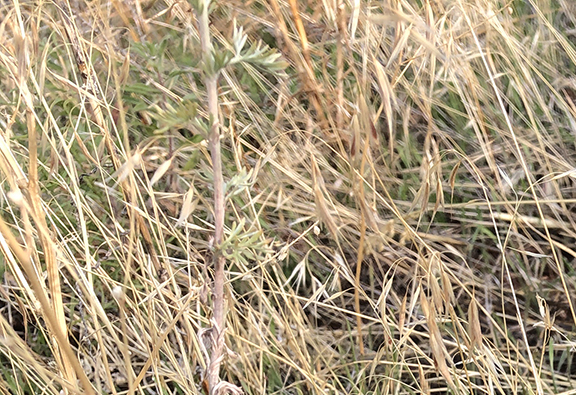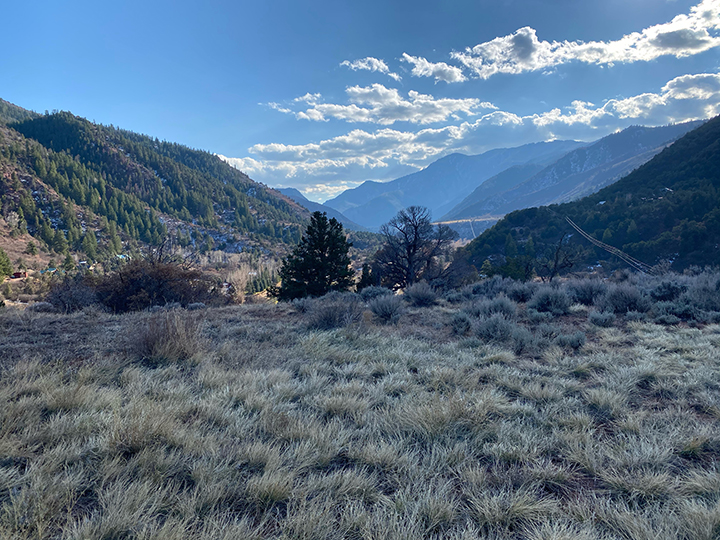Successful cheatgrass battle keys Red Wind Point restoration

Cheatgrass outcompeting native vegetation.
On a high meadow at Red Wind Point Open Space, something remarkable is happening.
In four years, the 6-acre expanse has transitioned from a disturbed piece of ground where roughly 26 percent of the vegetation was native to one where about 81 percent of the plants are native. Cheatgrass, the noxious weed that once dominated the landscape, is all but gone.
The transformation is the result of the trial use of Indizaflam, a restoration herbicide that uniquely attacks invasive annual grasses before their seeds germinate. The isolated meadow atop the distinctive red cliffs of Red Wind Point (an open space adjacent to the Crystal River, south of Carbondale) was deemed a suitable spot to give the herbicide a try. An application in the fall of 2020 killed cheatgrass in the soil as its seeds were germinating, before it could come up the following spring. With no new generation of cheatgrass to produce seeds, the aggressive cycle of cheatgrass reproduction was interrupted and the infestation was largely eradicated. However, monitoring in 2021 revealed a few areas that were missed by the initial treatment. This led to a follow-up treatment in 2022 – an example of adaptive management in action.
The results of the herbicide use have been studied annually since 2021. Alongside the significant decline in cheatgrass, the recovery of native plants has been dramatic, with the 2023 assessment documenting the greatest coverage of native plants yet, at about 81 percent. Native species showing the greatest rebound include hairy golden aster, white prairie aster, white sage and rubber rabbitbrush.
Along with cheatgrass, the herbicide prevented germination of some native forbs that were present on the open space in 2020. Those species include annual and biennial plants, notably diffuse groundsmoke, Douglas’ knotweed, narrowleaf mountain trumpet and pygmy flower rock jasmine. Their disappearance has been the tradeoff for eliminating the cheatgrass and greatly improving the forage with other, flourishing native plants. Plans currently include a reseeding effort after year five of the study, after herbicide residuals have cleared out of the soil and the seeds of native plants have a chance to establish without competition from cheatgrass.
Monitoring at Red Wind Point will continue in 2024 and 2025 to evaluate the long-term effectiveness of this trial. For consistency, the site is checked in mid-June of each year.
Cheatgrass is a noxious weed introduced to the United States in the 1800s as a contaminant in seed and straw, according to the U.S. Geological Survey. It thrives in disturbed areas, quickly displacing native plants. Cheatgrass can produce more than 10,000 plants per square yard. Green for a short period in the spring, it quickly dies out, becoming unpalatable and highly flammable.
While the use of the herbicide to eradicate cheatgrass may not be an option on all open spaces where the species is a problem, the outcome at Red Wind Point can help guide its use on not only open space, but on other public and private lands where cheatgrass is a significant problem.
In the meantime, bighorn sheep may find the forage at Red Wind Point increasingly to their liking.
– By Pitkin County Open Space and Trails

The high mesa at Red Wind Point is the testing ground for cheatgrass elimination.
